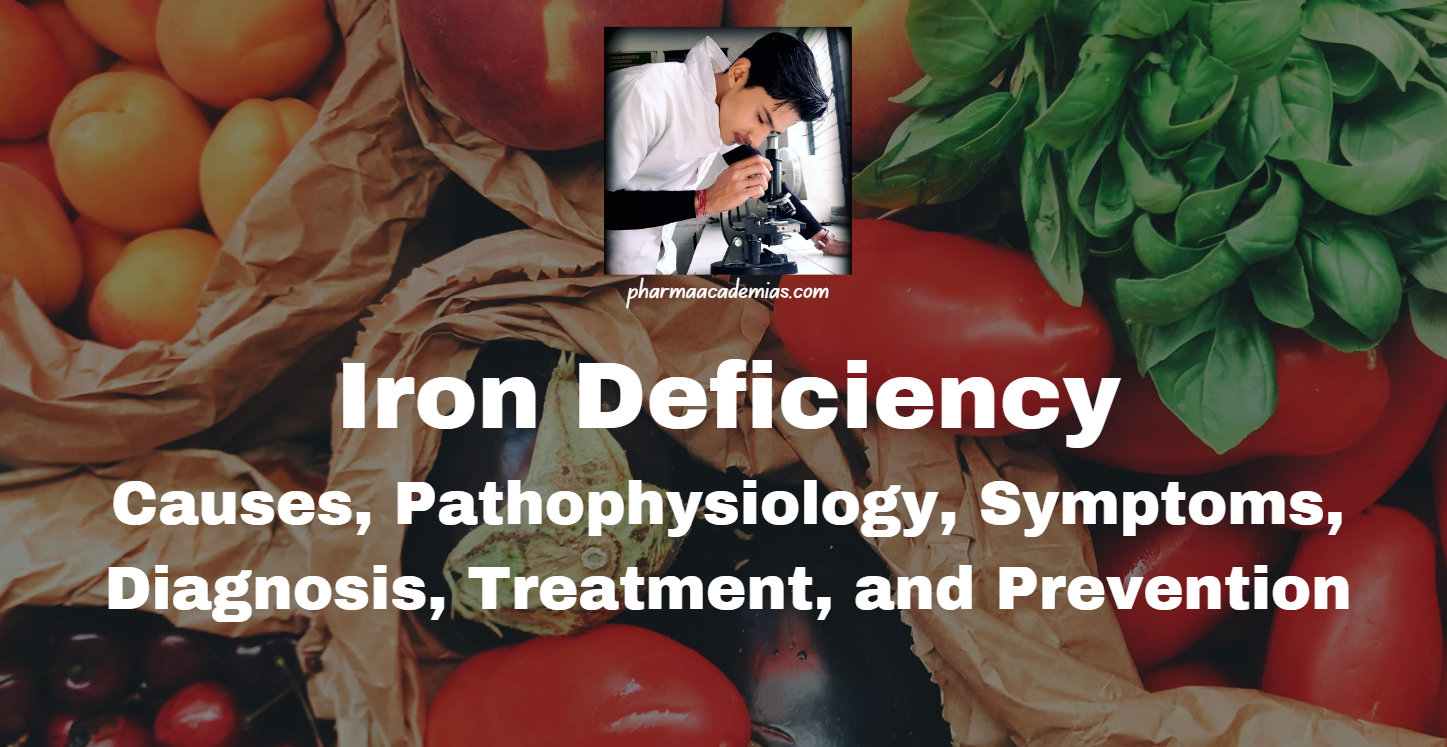Iron deficiency is one of the most common nutritional disorders worldwide, affecting individuals of all ages. It occurs when the body lacks enough iron to produce adequate levels of hemoglobin, the protein in red blood cells that carries oxygen throughout the body. This condition can lead to iron deficiency anemia, characterized by fatigue, weakness, and other health issues. This note explores the causes, pathophysiology, symptoms, diagnosis, treatment, and prevention of iron deficiency.
Causes of Iron Deficiency
Iron deficiency can result from several factors, including:
1. Inadequate Dietary Intake: Insufficient consumption of iron-rich foods, such as red meat, poultry, fish, legumes, and leafy green vegetables. Vegetarian or vegan diets may lack heme iron, which is more easily absorbed by the body.
2. Increased Iron Requirements: Growth spurts in infants, children, and adolescents. Pregnancy and lactation increase the demand for iron to support fetal growth and milk production.
3. Chronic Blood Loss:
Heavy menstrual periods (menorrhagia) in women.
Gastrointestinal bleeding from ulcers, polyps, or cancers.
Frequent blood donations or medical conditions causing chronic blood loss.
4. Malabsorption Disorders: Conditions like celiac disease, Crohn’s disease, or surgical removal of parts of the stomach or intestines can impair iron absorption.
5. Chronic Diseases: Chronic kidney disease, heart failure, and other long-term illnesses can affect iron metabolism and utilization.
Pathophysiology of Iron Deficiency
Iron is an essential component of hemoglobin and other proteins involved in oxygen transport and storage. The body regulates iron balance through absorption, storage, and recycling processes:
1. Absorption: Iron is absorbed primarily in the duodenum and upper jejunum of the small intestine. Heme iron (from animal sources) is more efficiently absorbed than non-heme iron (from plant sources).
2. Storage: Excess iron is stored in the liver, spleen, and bone marrow as ferritin and hemosiderin.
3. Recycling: Iron from senescent red blood cells is recycled by macrophages and returned to the bone marrow for new red blood cell production.
When iron intake or absorption is insufficient to meet the body’s needs, iron stores are gradually depleted, leading to a decrease in hemoglobin synthesis and subsequent development of iron deficiency anemia.
Symptoms of Iron Deficiency
Iron deficiency can manifest in various ways, depending on the severity and duration of the deficiency:
1. General Symptoms:
– Fatigue and weakness.
– Pale skin and mucous membranes (pallor).
– Shortness of breath, especially during physical activity.
– Dizziness or lightheadedness.
– Cold hands and feet.
2. Specific Symptoms:
– Brittle nails and hair loss.
– Cravings for non-nutritive substances (pica), such as ice, dirt, or starch.
– Soreness or swelling of the tongue (glossitis).
– Cracks or sores at the corners of the mouth (angular cheilitis).
– Restless legs syndrome.
Diagnosis of Iron Deficiency
Diagnosis of iron deficiency involves a combination of medical history, physical examination, and laboratory tests:
1. Medical History and Physical Examination: Assessing dietary habits, menstrual history, gastrointestinal symptoms, and chronic diseases. Physical examination may reveal pallor, spoon-shaped nails (koilonychia), and other signs of anemia.
2. Laboratory Tests:
Complete Blood Count (CBC): Low hemoglobin and hematocrit levels, microcytic hypochromic red blood cells.
Serum Ferritin: Low levels indicate depleted iron stores.
Serum Iron: Reduced levels of circulating iron.
Total Iron-Binding Capacity (TIBC): Increased capacity due to low iron levels.
Transferrin Saturation: Low percentage of transferrin bound to iron.
3. Additional Tests:
Reticulocyte Count: To assess bone marrow response to anemia.
Stool Occult Blood Test: To detect gastrointestinal bleeding.
Treatment of Iron Deficiency
Treatment of iron deficiency focuses on replenishing iron stores and addressing the underlying cause:
1. Dietary Changes: Increasing intake of iron-rich foods, such as lean meats, seafood, beans, fortified cereals, and leafy green vegetables. Combining iron-rich foods with vitamin C-rich foods (e.g., citrus fruits, tomatoes) to enhance non-heme iron absorption.
2. Iron Supplements: Oral iron supplements (e.g., ferrous sulfate, ferrous gluconate) are commonly prescribed. Intravenous iron may be necessary for individuals who cannot tolerate oral supplements or have severe deficiency.
3. Treating Underlying Causes: Addressing conditions causing chronic blood loss, such as menstrual irregularities or gastrointestinal disorders. Managing malabsorption syndromes with appropriate treatments.
4. Monitoring and Follow-Up: Regular monitoring of hemoglobin, ferritin, and other relevant parameters to assess response to treatment. Adjusting treatment based on individual needs and response.
Prevention of Iron Deficiency
Preventive measures to avoid iron deficiency include:
1. Balanced Diet: Consuming a diet rich in iron-containing foods, both heme and non-heme sources. Including foods that enhance iron absorption and avoiding excessive consumption of inhibitors (e.g., tea, coffee, calcium-rich foods).
2. Awareness and Early Detection: Regular health check-ups and screenings for high-risk groups, such as women of childbearing age, infants, children, and individuals with chronic diseases.
3. Supplementation: Prophylactic iron supplements for populations at risk, such as pregnant women and individuals with conditions that predispose them to iron deficiency.
Conclusion
Iron deficiency is a prevalent and manageable condition with significant implications for health and well-being. Understanding the causes, pathophysiology, symptoms, diagnosis, treatment, and prevention of iron deficiency is crucial for effective management and improving patient outcomes. Early detection, appropriate dietary modifications, and timely medical interventions can help prevent complications associated with iron deficiency and ensure optimal health.

